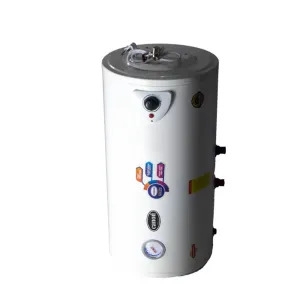Electric geysers have become an essential household appliance, especially in countries where winters are cold or water heating is a daily necessity. They provide a reliable and convenient source of hot water for bathing, washing, and cleaning. Unlike gas or solar geysers, electric geysers are compact, efficient, and easy to install, making them a popular choice in modern homes.
This article explores the working, types, benefits, installation tips, and maintenance of electric geysers, along with frequently asked questions to help you make an informed decision.
What is an Electric Geyser?
An electric geyser is a device that heats water using electricity. It consists of a water tank, a heating element, a thermostat to regulate temperature, and safety features such as pressure relief valves. The heating element, usually made of copper or stainless steel, converts electrical energy into heat, which warms the water stored in the tank.
Electric geysers are suitable for homes, offices, restaurants, and hotels, providing instant or stored hot water depending on the model.
How Does an Electric Geyser Work?
The working principle of an electric geyser is straightforward:
-
Water enters the geyser tank from the main supply.
-
The heating element is powered on and heats the water to the set temperature.
-
The thermostat monitors the water temperature and automatically cuts off electricity once the desired heat is reached.
-
Insulation around the tank helps maintain water temperature for several hours, reducing energy consumption.
Some modern electric geysers also feature digital temperature controls, timers, and energy-saving modes to optimize performance.
Types of Electric Geysers
Electric geysers come in various types to suit different household requirements:
1. Storage Electric Geysers
These geysers have a tank that stores hot water for later use. They are ideal for families who need a large quantity of hot water.
-
Pros: Provides continuous hot water, suitable for multiple users.
-
Cons: Takes longer to heat water and occupies more space.
2. Instant Electric Geysers
Instant geysers heat water directly as it flows through the heating element, without storing it. They are compact and energy-efficient.
-
Pros: Quick hot water supply, space-saving, lower energy consumption.
-
Cons: Limited water flow, not ideal for simultaneous use by multiple users.
3. Vertical and Horizontal Geysers
Depending on space availability, geysers can be installed vertically or horizontally. Vertical geysers are usually more energy-efficient, while horizontal models are suitable for low-ceiling bathrooms.
4. Smart Electric Geysers
These advanced models come with Wi-Fi control, mobile app connectivity, digital displays, and programmable timers. They allow precise temperature control and monitoring of energy consumption.
Benefits of Electric Geysers
-
Convenience: Provides hot water instantly or on demand, depending on the type.
-
Safety: Modern models include thermal cut-off, pressure relief valves, and shockproof bodies.
-
Energy Efficiency: Well-insulated tanks and instant geyser designs minimize energy wastage.
-
Low Maintenance: Fewer moving parts compared to gas geysers, with simple cleaning and descaling required.
-
Clean and Eco-Friendly: Does not produce harmful gases, making it environmentally safer than gas-powered alternatives.
-
Easy Installation: Can be mounted on walls or installed in small spaces without complex piping. Instant Gas Geyser
Choosing the Right Electric Geyser
When selecting an electric geyser, consider the following factors:
-
Capacity:
-
6–10 liters: Suitable for kitchens or single bathrooms.
-
15–25 liters: Ideal for a small family of 2–3 members.
-
30–50 liters: Suitable for large families or multiple users simultaneously.
-
-
Power Rating:
Common ratings range from 1.5 kW to 3 kW. Higher ratings heat water faster but consume more electricity. -
Tank Material:
Look for corrosion-resistant materials such as glass-lined or stainless steel tanks for longer lifespan. -
Safety Features:
Automatic shut-off, thermal cut-off, and pressure release valves are essential for safe operation. -
Energy Efficiency:
Models with insulation and thermostats reduce electricity bills. -
Warranty and After-Sales Service:
Opt for reputable brands that provide a minimum of one year warranty and accessible service centers.
Maintenance Tips
-
Regular Cleaning: Remove sediment and limescale from the tank every 6–12 months.
-
Check the Heating Element: Descale or replace if water is heating slowly.
-
Inspect Safety Valves: Ensure thermal cut-off and pressure relief valves work properly.
-
Turn Off When Not in Use: Saves energy and prolongs geyser lifespan.
-
Professional Servicing: Schedule annual inspections for optimal performance and safety.
Common Problems and Solutions
-
Water Not Heating: Usually caused by a faulty heating element or thermostat.
-
Water Leaks: Check inlet and outlet connections or the pressure relief valve.
-
Overheating: Malfunctioning thermostat may need replacement.
-
Noise During Operation: Limescale buildup on the heating element can cause popping or hissing sounds. Descaling solves this issue.
Frequently Asked Questions (FAQs)
1. How long does an electric geyser last?
Most electric geysers last between 8–12 years with proper maintenance.
2. How much electricity does an electric geyser consume?
A 2 kW geyser running for 30 minutes typically uses 1 kWh of electricity, depending on usage and insulation.
3. Which type of electric geyser is best for small households?
An instant electric geyser with 6–10 liters capacity is ideal for kitchens or single-person use.
4. Is it safe to keep an electric geyser on all the time?
Modern geysers have automatic shut-off mechanisms, but turning off the geyser when not in use saves electricity and enhances safety.
5. Can electric geysers work with hard water?
Yes, but it is recommended to use a corrosion-resistant tank or a water softener to prevent limescale buildup.
6. What is the ideal temperature for an electric geyser?
The optimal water temperature is between 55–60°C, which is sufficient for bathing while conserving energy.
7. How do I know if my geyser needs replacement?
Frequent leaks, inconsistent heating, rust in water, excessive noise, or a malfunctioning thermostat are signs that replacement may be necessary.
8. Can electric geysers provide hot water for multiple taps simultaneously?
Only larger storage geysers with 30–50 liters capacity can handle multiple taps. Instant geysers are designed for single-point usage.
Conclusion
Electric geysers are a reliable, safe, and energy-efficient solution for modern households. With various types available, including storage, instant, and smart models, homeowners can choose a unit based on their water usage, space availability, and budget.
By considering factors such as capacity, power rating, tank material, safety features, and energy efficiency, you can select a geyser that provides consistent hot water for years to come. Regular maintenance and timely servicing will ensure longevity and optimal performance, making an electric geyser a worthwhile investment for every home.






